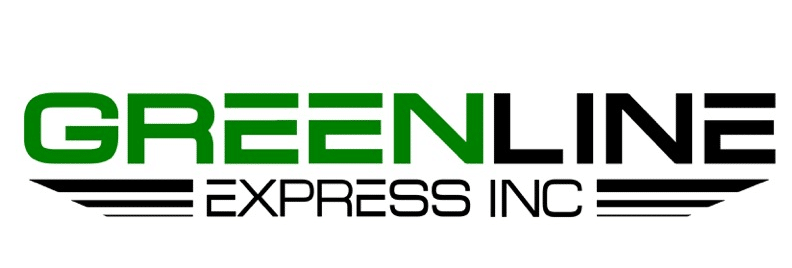Introduction: Why Freight Consolidation Isn’t Just a Buzzword Anymore
Freight consolidation used to be something only the biggest shippers worried about. Today, with rising fuel costs, unpredictable delivery timelines, and tighter profit margins across the board, freight consolidation has become a practical, strategic tool for shippers of all sizes. Especially in LTL (Less-than-Truckload) scenarios, consolidating freight isn’t just about reducing costs—it’s about creating a smoother, more dependable shipping process from end to end.
At GreenlineX, we’ve seen consolidation strategies completely change the game for regional and cross-country shippers alike—particularly those moving between California and the Midwest. If you’re struggling with partial loads, excess handling, or unpredictable delivery times, it’s worth taking a deeper look.
This guide will walk you through how freight consolidation works, how it saves you money, and what kind of companies benefit most. You’ll also find tips for improving consolidation strategy,
Section 1: What Is Freight Consolidation and How Does It Actually Work?
Freight consolidation is the practice of combining multiple smaller shipments (often from different customers or locations) into one full truckload that travels the majority of the route together before being split off at a distribution center for final-mile delivery.
This method works especially well for:
- LTL shipments that consistently fall short of a full truckload
- Shipments headed to similar geographic regions
- Shippers who use repeated routes but have volume fluctuations
Rather than paying for “empty space” in a trailer, you’re effectively sharing the cost with others while maintaining control over delivery expectations. In our case at GreenlineX, we often consolidate chilled, frozen, and dry LTL shipments at our Sacramento terminal before they head east to the Midwest or elsewhere.
Consolidation typically involves:
- Local pickup of LTL or partial shipments
- Sorting and cross-docking at a central warehouse (like ours in Sacramento)
- Long-haul transport using a full truckload carrier
- Breakout at a regional distribution center and final-mile delivery
The beauty of this method lies in its balance: you gain some cost benefits of full truckload while still shipping lower volumes on your end.
Section 2: Why Freight Consolidation Can Save You Thousands
It’s not just about lowering rates per pallet—though that happens too. Smart freight consolidation can cut costs across multiple parts of your operation:
1. Lower Per-Unit Shipping Costs
When your freight is pooled with others, the cost per pallet (or per 100 lbs) drops. Instead of paying premium rates for underutilized LTL, you’re splitting costs efficiently.
2. Reduced Handling and Damage
Fewer touchpoints mean fewer chances for damage. Rather than getting unloaded and reloaded at multiple terminals (a common pain point in national LTL), your freight often travels further as part of a consolidated load with fewer transfers.
3. Improved On-Time Performance
Since consolidated freight often runs on dedicated lanes or optimized long-haul schedules, delivery windows can be more reliable—especially when your carrier, like GreenlineX, controls both the consolidation and the outbound transportation.
4. Storage Cost Reductions
By aligning your pickup schedule with consolidation runs, you may be able to reduce the need for long-term warehousing or staging at origin. That’s particularly useful for seasonal or perishable goods like frozen food and beverages.
Want to see how this pairs with cost-saving strategies for temperature-sensitive shipments? Check out our blog on saving money on reefer LTL freight without sacrificing reliability.
Section 3: When Is Freight Consolidation the Wrong Choice?
While consolidation works wonders in many cases, it’s not a one-size-fits-all solution. It’s worth knowing when to hold back:
- Tight timelines – If your freight must be delivered immediately or within very narrow windows, standard LTL or even expedited options might be better.
- Extremely high-value or security-sensitive loads – Consolidation means shared space and some co-mingling of freight. If your goods require sealed solo trailers or armed delivery, consolidation might not suit.
- Complex final-mile routing – If your customer locations are widely scattered without overlap, splitting consolidated freight may create more complexity than value.
Still, many of these challenges can be overcome by working with a carrier or logistics partner who offers hybrid solutions—like cross-docking, route planning, or localized distribution.
Section 4: How to Start Implementing Freight Consolidation in Your Business
Even if you’re not ready to fully overhaul your logistics, there are immediate steps you can take to begin benefiting from freight consolidation.
1. Audit Your Shipment Volumes
Look back at 30–90 days of outbound shipments. Do you consistently send small batches to the same regions? That’s prime consolidation territory.
2. Align Your Scheduling
Consolidation depends on rhythm. Even shifting pickups by 1–2 days can make you eligible to ride on an existing truckload lane.
3. Find a Logistics Partner With Control Over Both Warehousing and Transport
Without warehousing (especially cross-docking), consolidation is hard to coordinate. GreenlineX controls consolidation, cross-docking, storage, and outbound lanes—which is why we’re able to help businesses like yours win on speed and cost.
4. Ask About Hybrid Models
Sometimes it’s not all or nothing. You may use consolidation for Midwest routes, but standard LTL elsewhere. Or you may combine short-term warehousing with multi-client loads. The key is working with a partner that understands flexibility.
5. Make Communication a Priority
One of the most common failure points is silence—shippers not knowing when the load departs, or carriers not confirming delivery appointments. Consolidation only works with clear communication. Our team uses direct email, real-time load updates, and optional TMS access to keep everyone on the same page.
According to Transportation.gov, freight consolidation and shared use infrastructure can significantly improve efficiency across national supply chains, particularly in cold and mixed cargo segments.
Section 6: Final Thoughts
Freight consolidation isn’t a quick hack—it’s a long-term logistics strategy that rewards planning and relationships. If you’re shipping multiple LTL loads per week and you’re seeing inefficiencies in cost, delays, or damage, this may be the edge you’ve been looking for.
By choosing a carrier who understands your routing patterns, product requirements (especially in reefer and frozen categories), and warehouse needs, you’ll reduce overhead and improve delivery reliability. We built GreenlineX specifically to serve shippers like you—those who need to connect California to the Midwest with precision, not just speed.
Ready to explore consolidation with us? Visit our homepage and see how we can make your freight operations more predictable and cost-effective.



